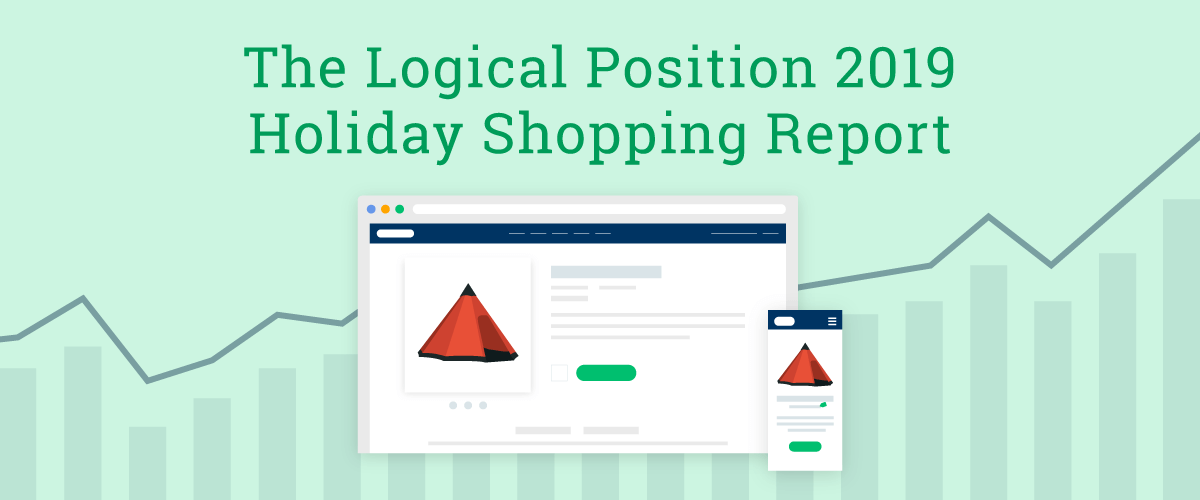While the 2019 holiday shopping season has come and gone, digital marketers are only just beginning to dig through the final numbers. This end-of-year post-mortem is the first step many of us take on the quest for the data that will help refine 2020 holiday strategies, and last year’s data certainly has a story to tell.
2019 Holiday Shopping Overview
The 2019 shopping season was a short one because Black Friday and Cyber Monday fell a week later than usual. As a result, retailers and marketers pushed to make every available shopping day count. The abbreviated season didn’t stop consumers, however. Total retail sales were up year-over-year this holiday season, reaching $722.60 billion — an increase of 4.1% over 2018’s return of $694.32 billion. Online shopping drove a larger percentage of holiday revenue than ever before, and a record number of consumers made their purchases with smartphones. Here’s how those numbers broke out:
Retail Sales Up Thanks to Online
Mastercard SpendingPulse™ measured holiday shopping sales from November 1st through December 24th. They found:
- Total holiday retail sales (not including automotive) increased by 3.4%.
- While department store overall sales fell by 1.8%, their online sales grew by 6.9%. This data underscores the importance of an omnichannel sales strategy.
- Specialty apparel sales grew by 17%, which was the largest year-over-year growth of any category.
E-Commerce Sales Set Records
Depending on who’s reporting, final 2019 e-commerce sales reached somewhere between $128 and $142 billion. While online sales set records, they still missed projections set by many industry analysts.
- Digital Commerce 360 estimates that online holiday sales hit $138.65 billion in 2019 — up 13.6% over 2018.
- According to Adobe, online revenue was a bit higher at $142.5 billion from November through December.
- Online’s share of total retail sales rose to 19.2% — up from 17.6% in 2018 — which is the highest e-commerce penetration rate to date.
- Salesforce.com painted a much weaker e-commerce picture. They estimated that online shoppers spent $128 billion in the United States, which is only a 6% increase over 2018. The firm expected to see $136 billion in online sales.
Cyber Monday Still Reigns Supreme
The Monday following Thanksgiving remains the biggest online shopping day of the year. The below infographic give’s Adobe’s day-of breakdown:

Smartphones drove spending in a big way on Cyber Monday, which mirrored the overall seasonal trend.
- Online sales from smartphones generated 33% of Cyber Monday revenue. This $3 billion represented 46% growth year-over-year and was the biggest smartphone spending day in history.
- Smartphones also drove the majority of retail site visits at 54% — up 19% year-over-year.
- Paid search was the top driver of revenue, with 24.4% of sales.
After breaking down the numbers, it’s clear that more and more consumers are choosing the convenience of shopping online using their smartphones, rather than braving busy stores. These same consumers are also keen on doing much of that shopping during the deal-rich period between Thanksgiving and Cyber Monday. This was certainly true for Logical Position (LP) clients.
Logical Position Holiday E-Commerce Overview
Our clients came hard out of the gate as the holiday season began, and were rewarded with significant results.

While our clients increased their spending on desktop, mobile saw the most significant jump of all.
- LP clients spent 17% more on desktop in November and December year-over-year.
- Mobile saw a big bump over desktop with a 26% year-over-year increase in November and December.
- However, advertising spend on tablets saw a big decrease of 24%.
It’s Never too Early to Plan for 2020
If these trends continue, retailers can anticipate continued growth in online sales, and expect such sales to consume an increasing percentage of their overall revenue. Consumers are also doing more of their holiday shopping via their smartphones than ever before. In response, retailers must have a proven online sales plan and a responsive website that caters to mobile shoppers first.
If your company needs help developing its 2020 holiday shopping strategy or getting its website mobile-ready, we’d love to help. Contact us today to learn more.




